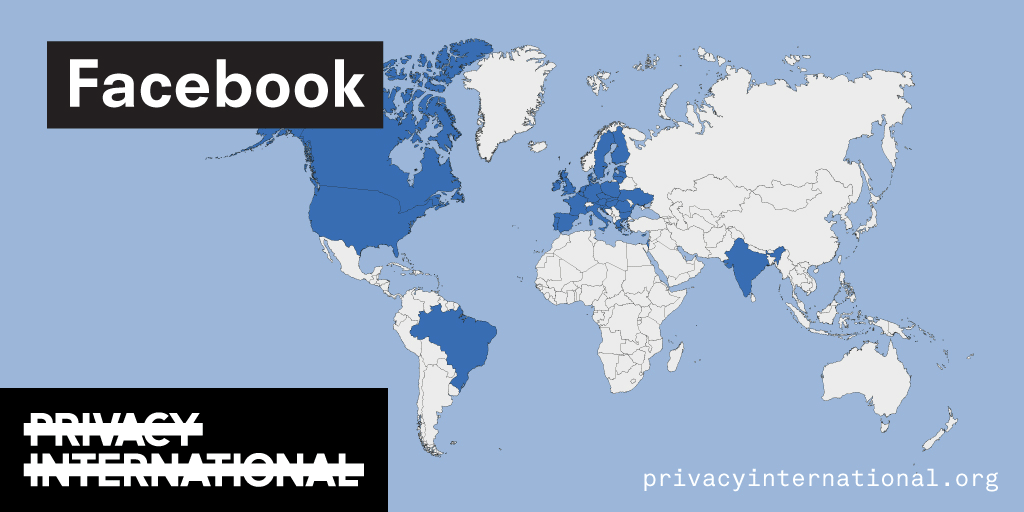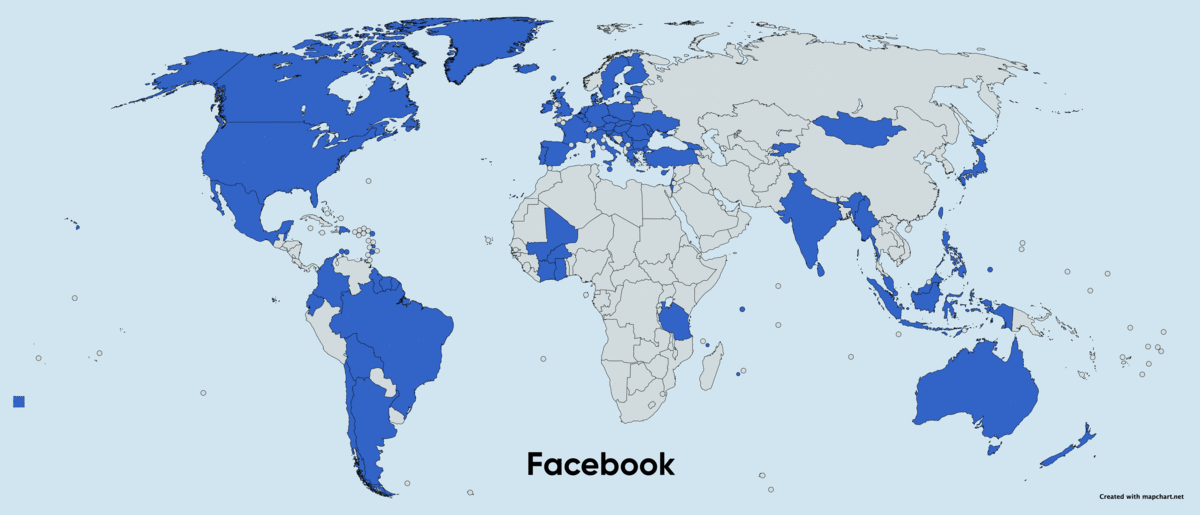
Why is advertising transparency important?
Companies like Facebook, Google, and Twitter are not doing enough to provide their users with ads transparency.
- In most countries around the world, users cannot understand why they’re being targeted with political ads
- Given the granularity with which advertisers are able to target users, the companies must provide much more information about why users are seeing an ad.

Recently the role of social media and search platforms in political campaigning and elections has come under scrutiny. Concerns range from the spread of disinformation, to profiling of users without their knowledge, to micro-targeting of users with tailored messages, to interference by foreign entities, and more. Significant attention has been paid to the transparency of political ads - what are companies doing to provide their users globally with meaningful transparency into how they're being targeted with ads and who is paying for them.
By providing users with this information, they are better able to discern that information they want to consume, better understand biases of advertisers, and better understand how they are being profiled and categorised by social media platforms like Facebook and Twitter. This type of transparency is incredibly important.
At present, companies like Facebook, Google, and Twitter are not doing enough to provide their users with ads transparency. Importantly, in most countries around the world, users cannot understand why they’re being targeted with political ads at all. This is because the companies have taken the deliberate decision to provide some of their users with increased transparency and some of their users without.
Here's a quick overview of what ad transparency Facebook, Google, and Twitter are providing users globally.
In a limited number of countries Facebook requires those running political ads to become authorised. These countries are Brazil, Canada, all EU member states, including the United Kingdom, as well as Argentina, India, Israel, Ukraine, and the USA. Facebook does not require political advertisers in other countries to become authorised. Where authorisation is required, those placing ads confirm their identity and location prior to running ads. The companies have applied different policies in different countries. In jurisdictions where companies are under pressure to act (by governments, institutions such as the EU, or civil society), they have adopted self-regulatory practices. Where such pressure is absent, they have, by and large, failed to act.
Authorisation results in 1) political ads appearing in Facebook’s Ad Library and 2) political ads showing disclaimers, which state the name or “entity” that paid for the ad. Facebook ads include ‘Why are you seeing this particular ad’ link which gives basic demographic and interest information, as well as information about where the data used to target to came from. The level of information granularity provided to users appears to depend in which country the ad is running. For example, activists have asked Facebook to provide basic transparency in Tunisia in advance of the 2019 elections.
In countries where authorisation is required, Facebook requires political ads to be bought in local currency and advertisers must have a payment source for ads with an address in country in which political ads are running. Advertisers can run political ads only in the countries in which they are authorised. If an advertiser wants to run political ads in multiple countries – they must complete the authorisation process in each respective country. However, two weeks prior to the 2019 EU Parliamentary elections, the Dutch digital rights organisation Bits of Freedom was able to run ads in Germanyusing a Dutch Facebook and bank account, apparently skirting the policy.
It’s worth noting also that researchers recently identified 96,106 political ads that ran without a ‘Paid for by’ disclosure, before being taken down. Researchers report that the total spent on those ads was “at least $42.8 USD and [made] 670 million impressions”.
Google provides increased ad transparency for EU member states including the UK, India, and the US. The company has an Ad Library that archives 1) ads that feature a political party, a current elected officeholder, or a candidate in the EU, 2) election ads that feature or are run by a political party, a political candidate, or a current member of the lower house of the Indian Parliament (Lok Sabha), and 3) ads that feature a current elected federal officeholder or candidate for the US House of Representatives, US Senate, President, or Vice President.
It includes election ads and basic information about the performance of the ads such as when an ad ran, a spend range, and a range of how many impressions an ad made [for example 10k – 100k], instead of exact impression data. There are other examples in the archive with amount spent ranges such as 500€ to 25,000€ and the impression data ranges from 1 million to 10 million people, which provides no meaningful transparency into the intended or actual audience of the ad.
Prior to 22 November 2019 when Twitter’s ban on political ads comes into force, the company required political advertisers running ads in certain elections to become certified. At present, only advertisers running ads related to “US federal elections, US issue advocacy, and Canada federal elections” must become certified. Past elections where certification was required include elections in Australia, India, and the 2019 EU Parliamentary election.
Twitter’s Ad Transparency Centre, which is available for Australia, Canada, EU member states, India, and the US only, shows billing information, amount spent, number of impressions, campaign disclaimers, and demographic targeting data – both intended audience and reached audience.
It appears that promoted ads are archived by Twitter for only seven days and that promoted political ads are archived for a longer period. No targeting information appears to be available for promoted ads, including for ads that are political but not related to an ongoing election. This means that outside of the campaign period, insight into how political actors that are testing messages, who they are testing those messages on, and how much they are spending to do so is lost.
The centre requires users to scroll through a long list of political advertisers and click through to see ads that each individual page is running. There does not appear to be a holistic view. For promoted ads, users are able to search for an advertiser name or topic to see related ads. The transparency centre does not separate out political issue ads.
Twitter says that when an advertiser spends less than $100 USD and an ad has fewer than 1K impressions, the transparency centre does not disaggregate the spend and impressions, meaning the number of times the tweet shows in users’ timelines. This means that the transparency centre could fail to provide comprehensive insight into political micro-targeting. In their paper entitled “Analysis of United States Online Political Advertising Transparency”, researchers found that “across all three platforms the majority of political ads are small, costing their sponsors less than $100 USD with 82% of all Facebook political ads costing between $0-$99. This confirms and quantifies the prevalence of small likely highly targeted ads that can contain custom political messaging.”
Twitter says that if an advertiser deletes an ad or their username, the ads will no longer be shown in the transparency centre.
What should be done?
It is problematic that companies do not provide users with complete information about why they are targeted with ads, particularly political ads. Given the granularity with which advertisers are able to target users on Facebook, Google, and Twitter, the companies must provide much more information about why users are seeing an ad.
This information should include at least: 1) the source of the data used to target ads, 2) the target audience of the advertiser and actual audience of the advertiser, 3) information about if the ad was micro-targeted [more details on the kind of information needed to make transparency meaningful here].


